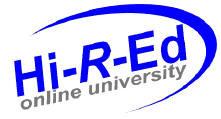Course
Anthropometric Measures

|
Course Anthropometric Measures |
|
A Few Practical Tips
|
Height/Weight
|
When taking anthropometric measurements on clients a few practical tips can
save time and make the session run smoothly.
Practice taking the measures and recording them with friends and relatives so that you get a routine going. You are less likely to forget something and more likely to expedite that part of your assessment. As this becomes second nature, you may be able to start your discussion with the patient while you record anthropometric data. Have the following close by and ready to use on a handy table or other surface area:
Alcohol swabs are useful for cleaning your equipment right after measuring the client (donít worry about cleaning equipment in front of the client, they may be appreciative of your practice). Oh, and donít forget to keep your pencil and other equipment out of your mouth! The data used to develop population norms in the United States was taken on the right side of the body. You will be measuring the right side of the client unless there is an amputation or other limitation. For the measures described, you will need to have the client remove his or her upper body clothing (women can leave their bra on). During the hip circumference, the client may either remove lower body clothing to their underwear or temporarily lower trousers or skirt to complete the measure. Either way, have dressing gowns handy according to the individualís preferences. To expedite readings, position the client so that you can reach all measures without repositioning them for each one. You can move around the client, but try to stay toward their right side. Anthropometric examination gives the clinician an additional opportunity to observe skin integrity, fatfold quality, and other physical examination information. Your methods and attitude can make a tremendous impact on developing your relationship with the client. Your conduct during this type of exam should be respectful and courteous. Remember that some clients, especially those with malnutrition and chronic disease may be more sensitive to pain. Long fingernails not only make it difficult to take accurate fatfold measures, but are very uncomfortable for the client. Taking measures should be straightforward and pain-free. Simple problems, such as failing to open the calipers before removing them from the fatfold and yanking a tape measure sharply away after measuring a circumference can be avoided by practicing to establish a routine.
|
Got that? Now continue on to the section